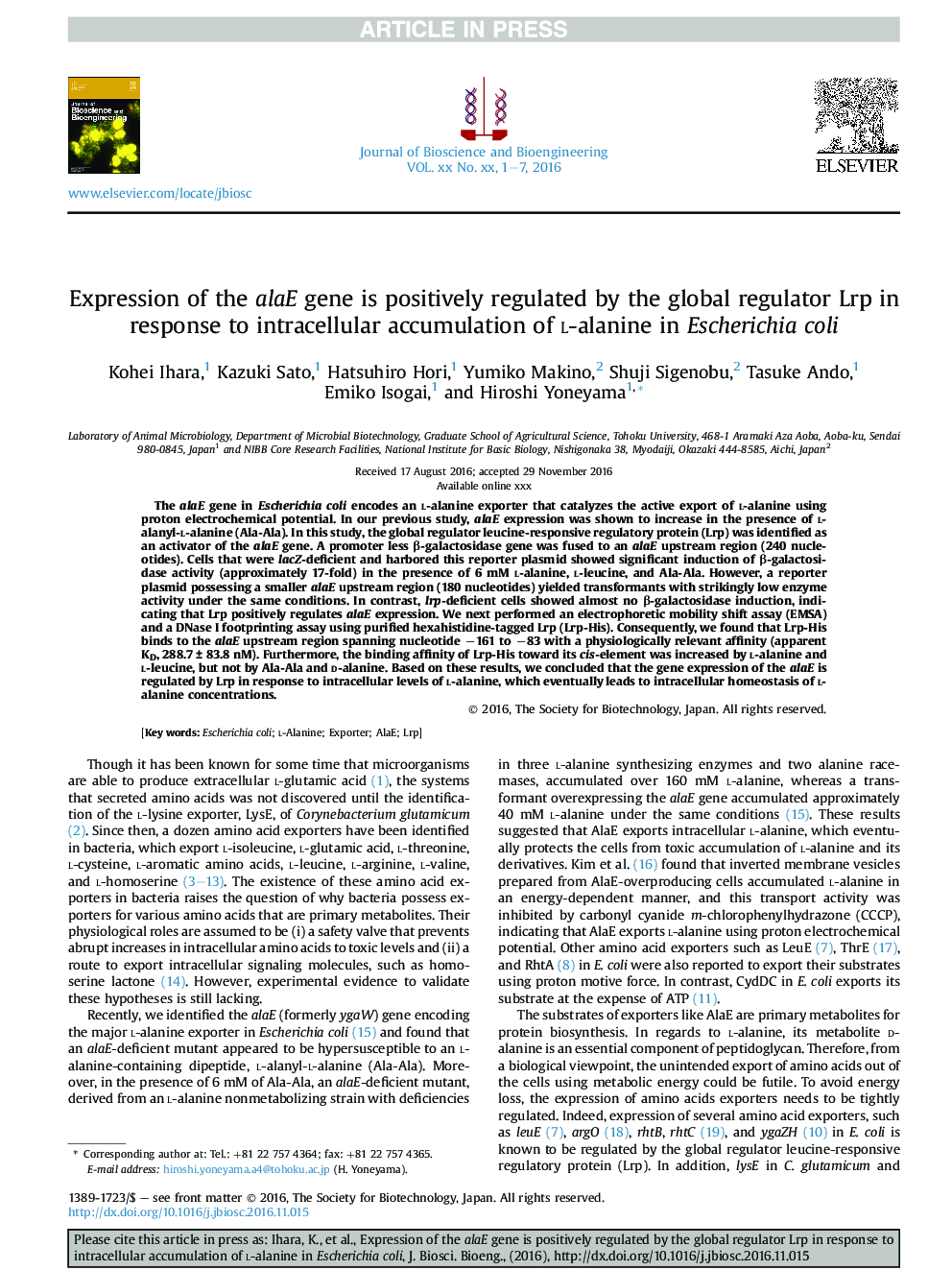| Article ID | Journal | Published Year | Pages | File Type |
|---|---|---|---|---|
| 4753326 | Journal of Bioscience and Bioengineering | 2017 | 7 Pages |
Abstract
The alaE gene in Escherichia coli encodes an l-alanine exporter that catalyzes the active export of l-alanine using proton electrochemical potential. In our previous study, alaE expression was shown to increase in the presence of l-alanyl-l-alanine (Ala-Ala). In this study, the global regulator leucine-responsive regulatory protein (Lrp) was identified as an activator of the alaE gene. A promoter less β-galactosidase gene was fused to an alaE upstream region (240 nucleotides). Cells that were lacZ-deficient and harbored this reporter plasmid showed significant induction of β-galactosidase activity (approximately 17-fold) in the presence of 6 mM l-alanine, l-leucine, and Ala-Ala. However, a reporter plasmid possessing a smaller alaE upstream region (180 nucleotides) yielded transformants with strikingly low enzyme activity under the same conditions. In contrast, lrp-deficient cells showed almost no β-galactosidase induction, indicating that Lrp positively regulates alaE expression. We next performed an electrophoretic mobility shift assay (EMSA) and a DNase I footprinting assay using purified hexahistidine-tagged Lrp (Lrp-His). Consequently, we found that Lrp-His binds to the alaE upstream region spanning nucleotide â161 to â83 with a physiologically relevant affinity (apparent KD, 288.7 ± 83.8 nM). Furthermore, the binding affinity of Lrp-His toward its cis-element was increased by l-alanine and l-leucine, but not by Ala-Ala and d-alanine. Based on these results, we concluded that the gene expression of the alaE is regulated by Lrp in response to intracellular levels of l-alanine, which eventually leads to intracellular homeostasis of l-alanine concentrations.
Keywords
Related Topics
Physical Sciences and Engineering
Chemical Engineering
Bioengineering
Authors
Kohei Ihara, Kazuki Sato, Hatsuhiro Hori, Yumiko Makino, Shuji Shigenobu, Tasuke Ando, Emiko Isogai, Hiroshi Yoneyama,
